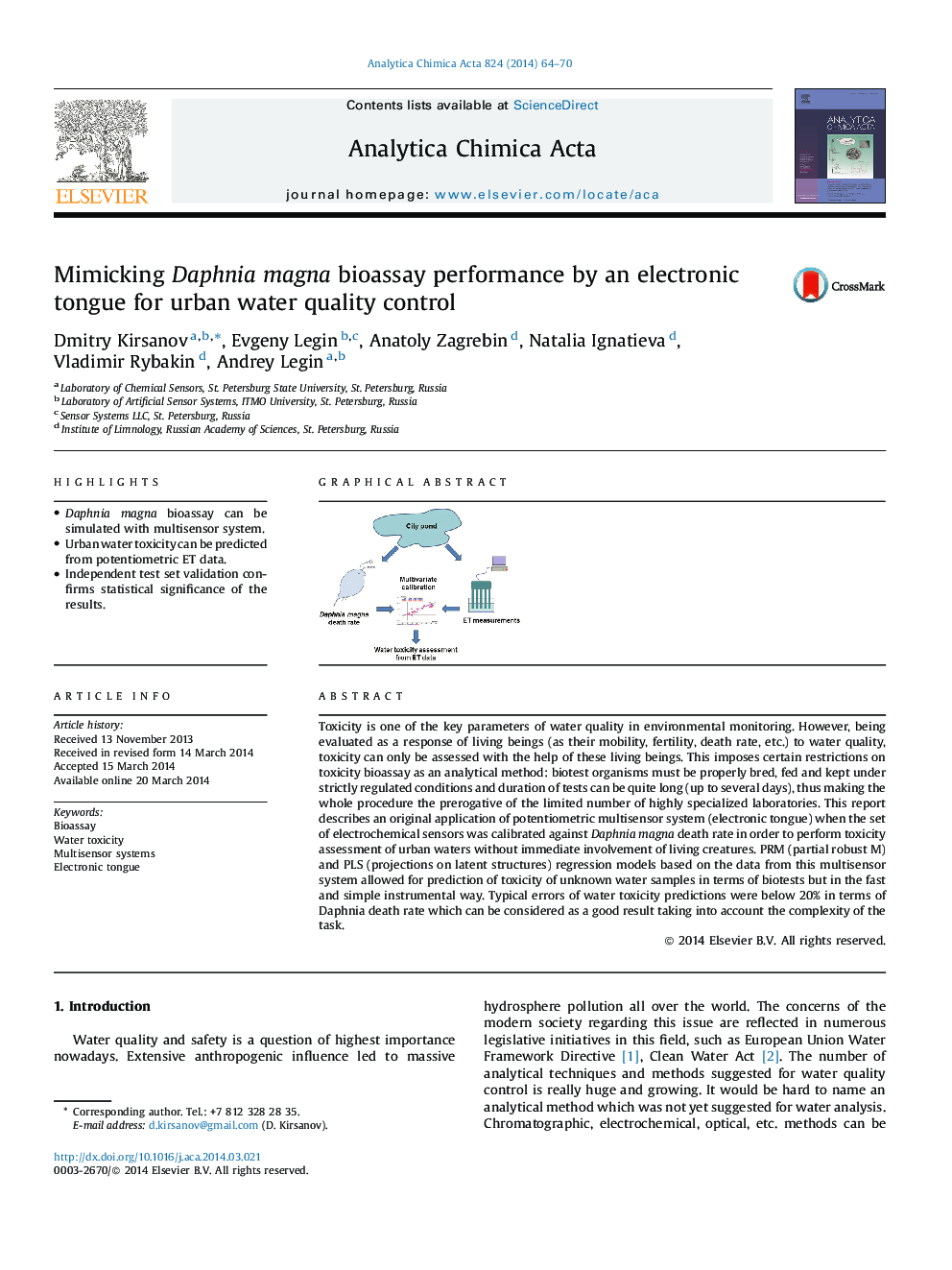| Article ID | Journal | Published Year | Pages | File Type |
|---|---|---|---|---|
| 1164119 | Analytica Chimica Acta | 2014 | 7 Pages |
•Daphnia magna bioassay can be simulated with multisensor system.•Urban water toxicity can be predicted from potentiometric ET data.•Independent test set validation confirms statistical significance of the results.
Toxicity is one of the key parameters of water quality in environmental monitoring. However, being evaluated as a response of living beings (as their mobility, fertility, death rate, etc.) to water quality, toxicity can only be assessed with the help of these living beings. This imposes certain restrictions on toxicity bioassay as an analytical method: biotest organisms must be properly bred, fed and kept under strictly regulated conditions and duration of tests can be quite long (up to several days), thus making the whole procedure the prerogative of the limited number of highly specialized laboratories. This report describes an original application of potentiometric multisensor system (electronic tongue) when the set of electrochemical sensors was calibrated against Daphnia magna death rate in order to perform toxicity assessment of urban waters without immediate involvement of living creatures. PRM (partial robust M) and PLS (projections on latent structures) regression models based on the data from this multisensor system allowed for prediction of toxicity of unknown water samples in terms of biotests but in the fast and simple instrumental way. Typical errors of water toxicity predictions were below 20% in terms of Daphnia death rate which can be considered as a good result taking into account the complexity of the task.
Graphical abstractFigure optionsDownload full-size imageDownload as PowerPoint slide
